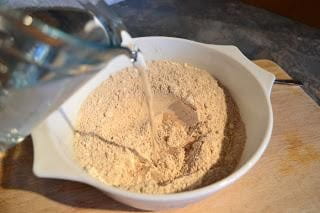Culina Quarantina: A Series of Roman Recipes
By Alicia Lopez
Recently, I’ve been doing a lot of cooking and baking to help pass the time in quarantine, so I decided to look into what cooking would have been like in Ancient Rome. Here are some of my favorite ancient recipes to help get you through quarantine. Bonam fortunam! You can find previous recipes here.
Sweet Cabbage
From Apicius’ De Re Coquinaria 3.15.1
Coctum ex aqua nitrata expressum concides minutum et teres piper, ligusticum, satureiam siccam cum cepa sicca, liquamen, oleum et vinum.
“Cook the cabbage in soda water, then squeeze all the water out. Chop the cabbage up finely. Crush and add pepper, lovage, satury, and onions, followed by fish sauce, olive oil, and raisin wine.”
Ingredients:
- 1/3 Cabbage
- 1/4 Onion
- 1/2 tsp Black Peppercorns
- 1/2 tbsp Fish Sauce
- 1/2 tbsp Baking Soda
- 1 tbsp Olive Oil
Recipe:
- Add the baking soda to a pan of water and bring to a The idea behind this is that it keeps the cabbage green, but the downside is that it breaks the cabbage’s cells down, making it a bit mushier.
- After washing the cabbage, chop up the leaves quite roughly, and boil them in the soda water for 3 or 4 minutes. Don’t overdo it.
- Remove the cabbage and chop it up finely.
- Grind up the black pepper, chop up the onion, pour in the fish sauce and oil and add them to a pan with the cabbage. Cook it until the onions are done and serve.
Source: http://pass-the-garum.blogspot.com/2013/02/Cabbage3ways.html
Cato’s Roman Bread
From Cato the Elder’s De Agri Cultura #74
Panem depsticium sic facito. Manus mortariumque bene lavato. Farinam in mortarium indito, aquae paulatim addito subigitoque pulchre. Ubi bene subegeris, defingito coquitoque sub testu.
“Recipe for kneaded bread: wash both your hands and a bowl thoroughly. Pour flour into the bowl, add water gradually, and knead well. When it is well kneaded, roll it out and bake it under an earthenware lid.”
Ingredients:
- 500g Spelt flour
- 350ml Water
- A Pinch of Salt
- A Splash of Olive Oil
Recipe:
- Preheat an oven to 355°F.
- Wash hands and wash a large bowl – we’re being authentic here!
- Add the flour to the bowl along with the pinch of salt. Give it a bit of a mix to distribute salt.
- Pour a splash of olive oil into the bowl.
- Slowly add in the water, mixing as you go, until you get a dough which isn’t too floury and isn’t too sticky.
- Knead the dough well and form into a circular shape. With a knife, score the top of the loaf, dividing it into 8. This doesn’t particularly help with the baking process, but it’s how the bread preserved at Pompeii looked, and it’s how it’s often depicted.
- Place on some greaseproof paper on a baking tray and place in the oven for 45 minutes. By this stage the bread should be lovely and crispy and golden on the outside. A good way to tell if it’s ready on the inside is to tap the bottom of the loaf – if it’s ready it will sound hollow. Because there is no yeast, the bread won’t have risen much if at all.
Source: http://pass-the-garum.blogspot.com/2012/10/moretum.html
Alicia Lopez (College ’23) is a student at the University of Pennsylvania studying Classical Studies and English.
